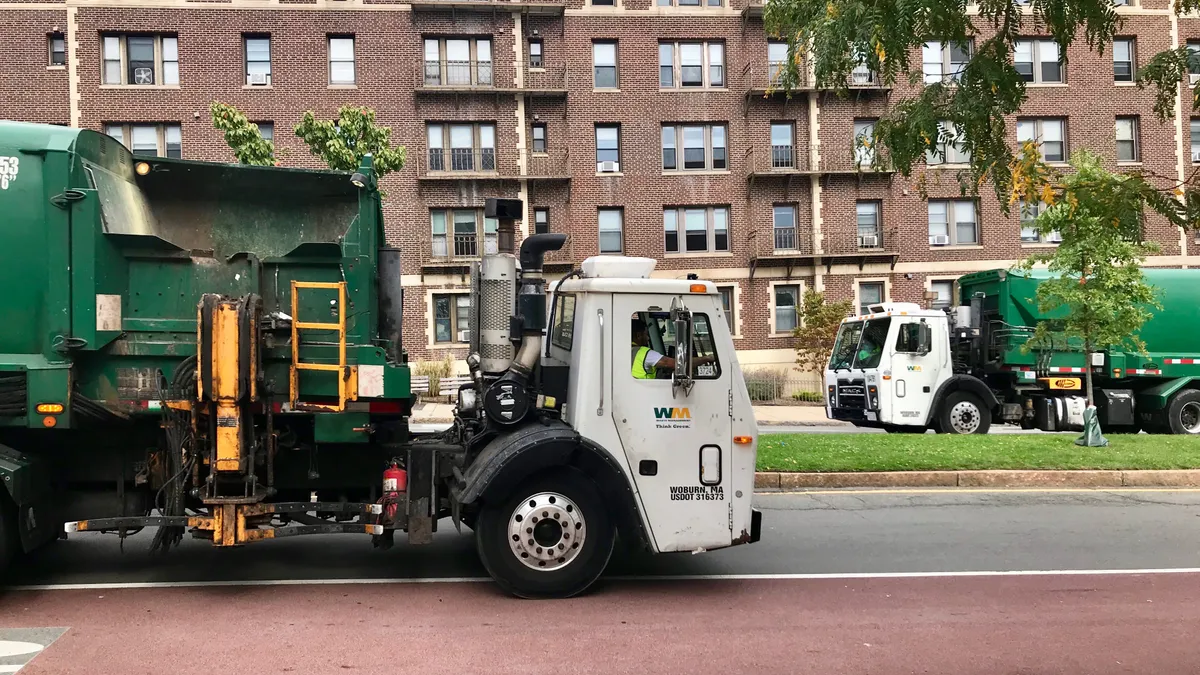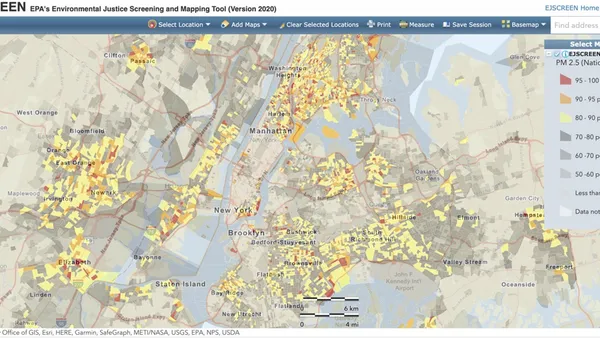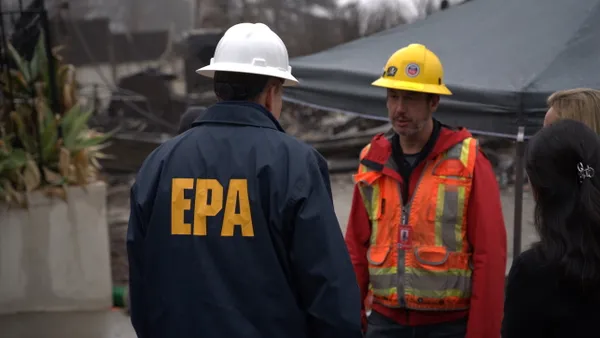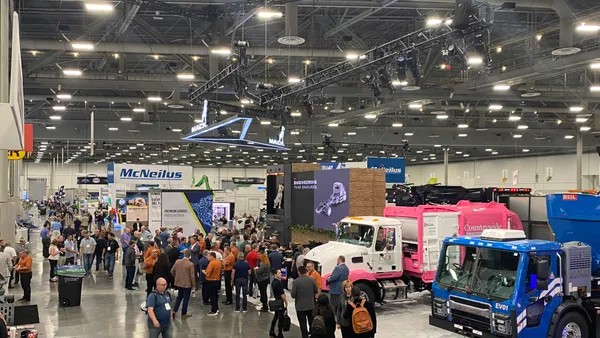Dive Brief:
- Waste Management's latest sustainability report includes a newly publicized set of 2025 targets as part of its longer-term push to "reduce, avoid and offset four times the emissions we generate in our operations by 2038."
- As part of that original plan, Waste Management aims to run 70% of its collection fleet on non-diesel alternatives and power 50% of those trucks with renewable natural gas (RNG) by 2025.
- New 2025 goals include using 100% renewable energy at company-controlled sites, cutting inbound recycling contamination rates to 10% and developing a system for measuring fugitive landfill emissions. A new target to pay all employees a "living wage," an unspecified number based on different factors, was achieved this year.
Dive Insight:
Waste Management became the first waste and recycling company with operations throughout North America to set a greenhouse gas emissions reduction target with its 2018 sustainability report. When asked in early 2019 whether the 20-year timeframe for this "moonshot" target was too long, given increasingly dire projections around climate change, CEO Jim Fish said the company was accelerating its work and said significant investment in natural gas vehicles "speaks to our urgency."
Since then, Republic Services and WCA Waste (recently acquired by GFL Environmental) set targets to reduce certain greenhouse gas emissions 35% by 2030. Other large players plan to set targets in the coming years and urgency around mitigating the worst effects of climate change has only increased.
Susan Robinson, Waste Management's senior director of sustainability and policy, said the company's new 2025 plan stems from a recognition among internal and external stakeholders that more near-term action is beneficial.
"Really everything we do, environmentally, rolls into the [2038] goal. But we also looked at it and said, well 2038 is a long time away. We probably should develop something that's sooner, a little bit more tangible," she said. "Our leadership team really understood the value of having shorter-term targets that we could be working towards."
The landscape around environmental, social and governance (ESG) reporting has also shifted since that initial goal was set, with many pointing to BlackRock CEO Larry Fink's January letter on climate risk as an important catalyst. BlackRock is one of Waste Management's largest shareholders. As investors begin looking for more formal ESG plans, Waste Management's move is expected to be well-received.
"Establishing interim 2025 goals, in our view, better aligns the company with investors’ timeframes for achieving progress. The six goals for 2025 are commendable and generally appear achievable," said Noah Kaye, a managing director and senior research analyst at Oppenheimer & Co, via email. He noted the contamination goal may be among the most challenging to meet, but said if the company "shows effort and directional progress here, we believe investors should be supportive."
Robinson said the company's average contamination rate is currently around 16% and the 10% target has been achieved at multiple sites so far, amid broader MRF investments described in a recent plastics-focused report.
As part of its process for this report, Waste Management also reassessed the "issues, risks and opportunities that are material to our sustainability strategy in a changing global climate" and identified 24 material topics of interest among stakeholders. On a matrix factoring in stakeholder interest and business impact, "leadership accountability" and "health & safety" ranked the highest. Kaye said this assessment was notable, as "third-party materiality frameworks like [the Sustainability Accounting Standards Board] are very useful tools, but they are still evolving in our view," and said the outcome highlighted the importance of a well-rounded ESG plan.
Waste Management has significant work ahead to meet these targets. Like all of its vertically-integrated competitors, landfills are the company's largest source of greenhouse gas emissions by far and precise measurement of those sites remains challenging for multiple reasons. As the sector works through those questions in the coming years, it still has the ability to capture more emissions through investments in various landfill gas systems. In some cases, that work can also complement fleet plans.
Through 2019, Waste Management reported powering 40% of its alternative fuel vehicles with RNG (toward the interim goal of 50%), in some cases using biogas from its own landfills. Separately, Waste Management reported more than 60% of its collection fleet is running on compressed natural gas (CNG) and small-scale adoption of electric collection vehicles is underway on the West Coast. As other players pivot their focus to electrification – considered preferable to CNG from an emissions standpoint, though not yet available at scale – Waste Management's near-term plans continue to include a focus on CNG with a higher share of its fleet converted than any major competitor.
The pending acquisition of Advanced Disposal Services can be expected to bring in even more CNG vehicles, and potentially affect Waste Management's progress toward the various targets in still unforeseen ways. Depending on when that deal is finalized, the Advanced assets could begin influencing metrics as soon as Waste Management's next ESG report.
Clarification: This piece has been updated to specify Waste Management was not the first waste company of any type to set an emissions reduction target, rather the first one with a large national presence.














